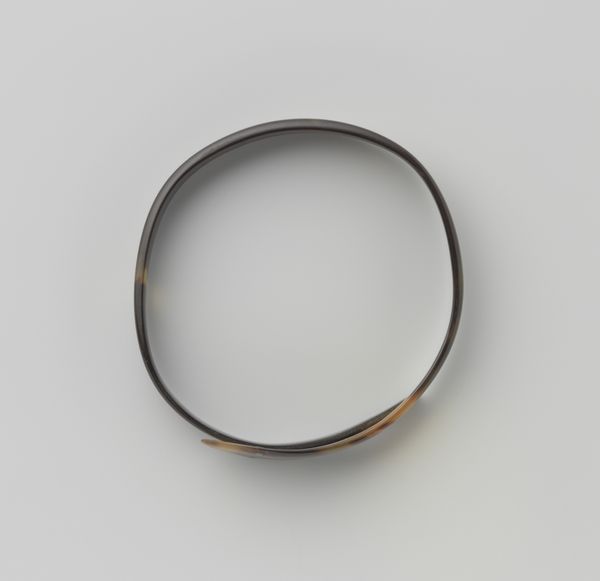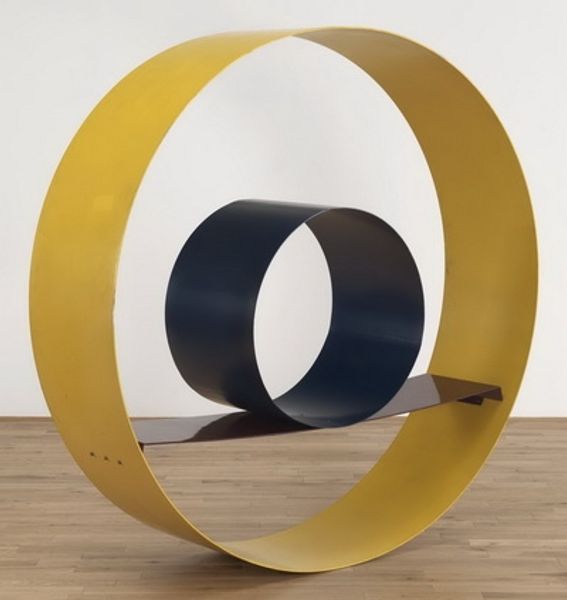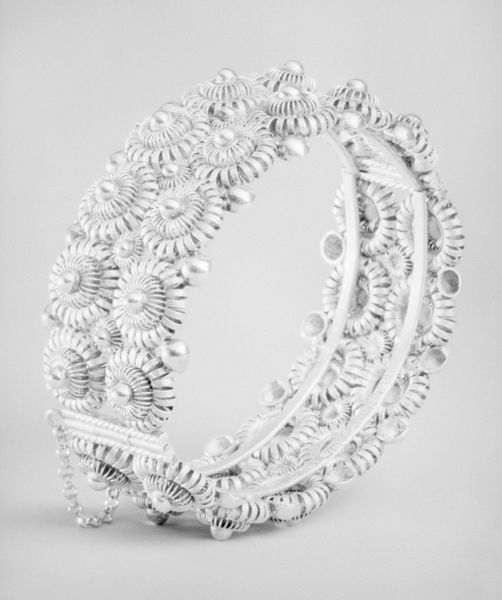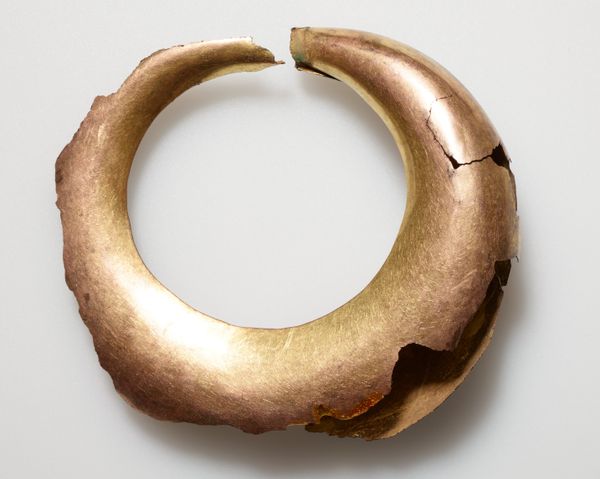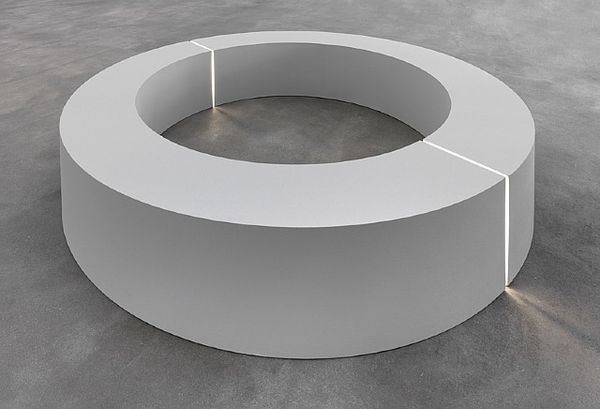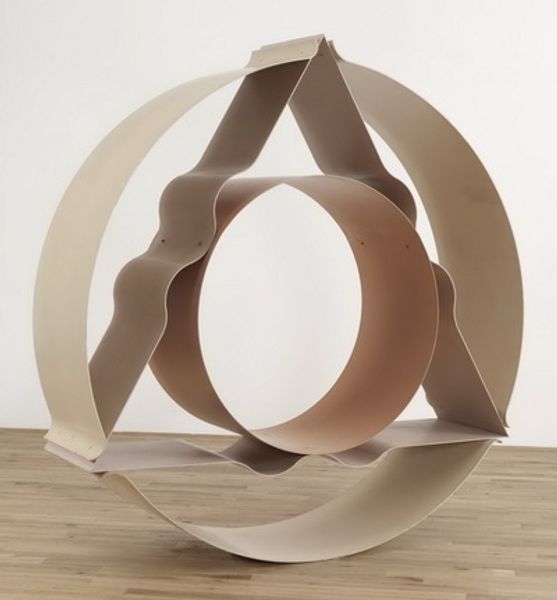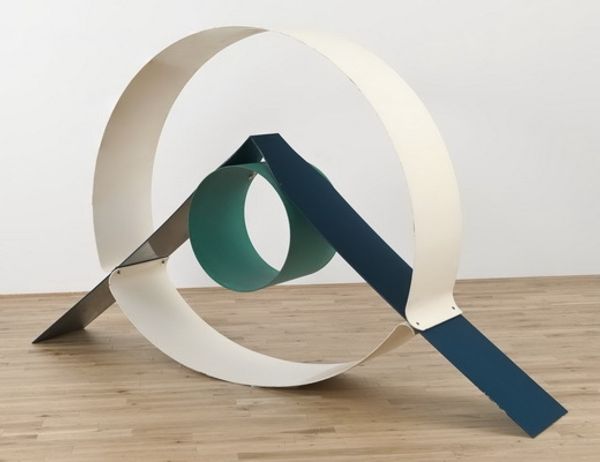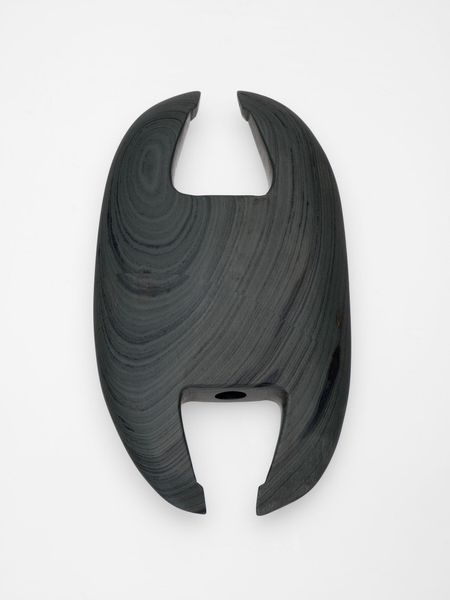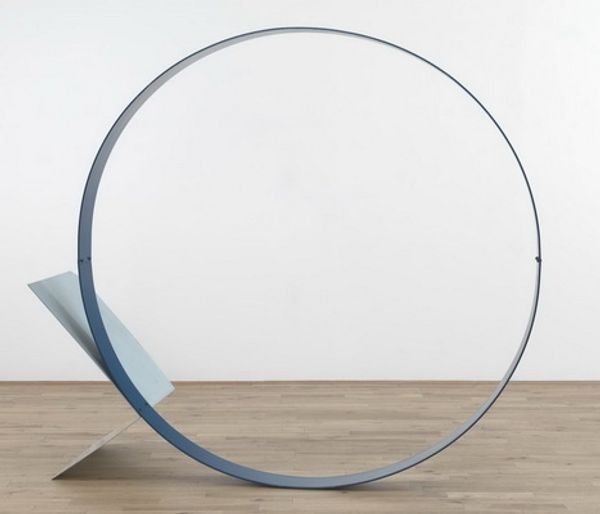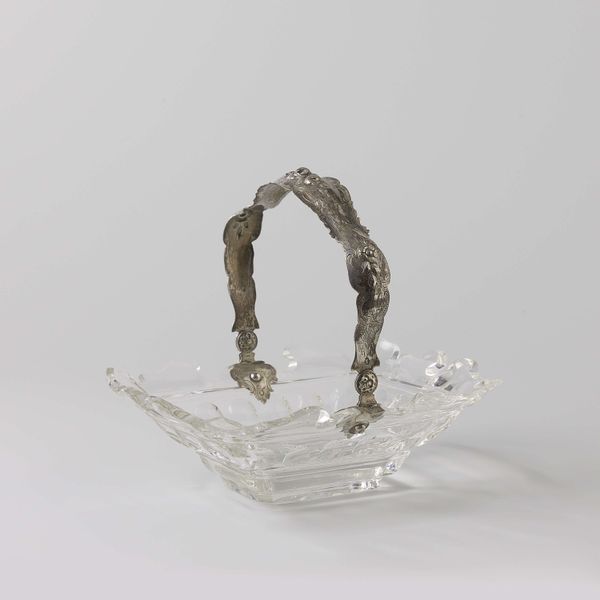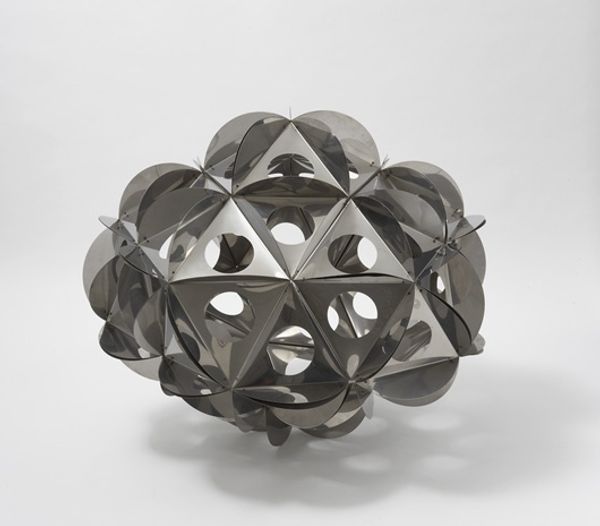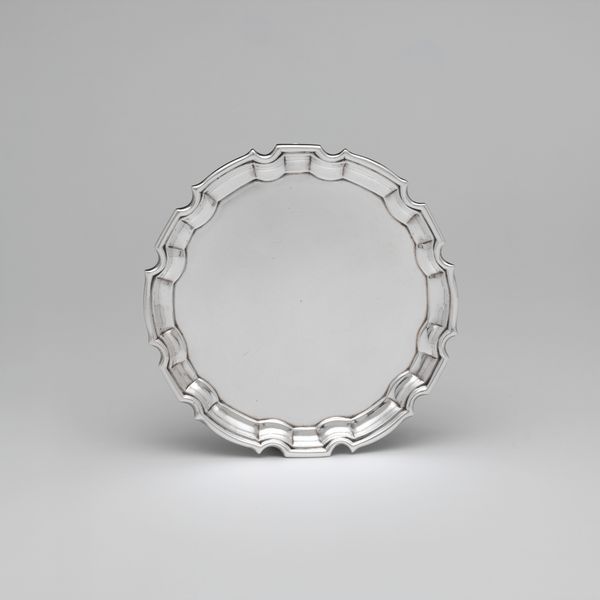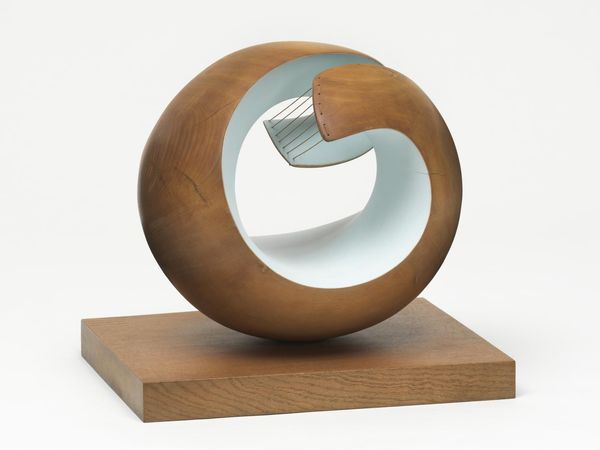
mixed-media, metal, sculpture, installation-art
#
mixed-media
#
conceptual-art
#
minimalism
#
metal
#
geometric
#
sculpture
#
installation-art
#
abstraction
#
modernism
Copyright: Nobuo Sekine,Fair Use
Nobuo Sekine made this sculpture, Phase of Nothingness–Black No.36, from fiberglass and resin. What does it mean to create a ‘phase of nothingness’? Sekine was a founding member of the Mono-ha, or ‘School of Things’, group of artists in Japan in the late 1960s. In part, their art was a reaction to the westernization of Japanese culture. Sekine and his colleagues resisted the urge to transform materials, instead arranging natural and industrial objects in ways that exposed their inherent properties and interdependencies. The circle is an important symbolic form. The circle’s geometry evokes both unity and emptiness. It is an elegant commentary on the dialectical relationship between the natural world and the cultural. Sekine’s work stands against the transformation of raw materials for industrial production and consumption. To understand Sekine’s work fully, we can look to manifestos from Mono-ha and critical essays written at the time. By examining social and cultural contexts, we can better understand the artist’s contribution to a vital moment in postwar Japanese art.
Comments
No comments
Be the first to comment and join the conversation on the ultimate creative platform.
